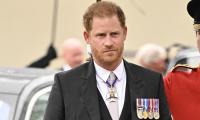MIAMI: The first total solar eclipse to sweep North America in nearly a century will march across the continent August 21, casting a shadow over millions of people from coast to coast.
The event, coined the "Great American Eclipse," is inspiring a surge in tourism in the United States, along with sky-high prices for travel to key viewing spots and a rise in scams such as counterfeit solar eclipse glasses. Celebrations are planned nationwide, including weddings timed to coincide with the eclipse and a live Caribbean cruise ship performance of the 1983 hit "Total Eclipse of the Heart" by the singer herself, Bonnie Tyler.
In a nation that is increasingly divided along political lines, some expressed hope that fascination for this spectacular phenomenon would offer people a chance to unite. "A large swath of the population will be able to easily see this eclipse," astronomer James Webb at Florida International University told AFP. "There are plenty of people out there in this day and age that are denying science, so this is an opportunity to show what we really know about the solar system."
The total eclipse, when the Moon fully blocks light from the Sun, will be visible from a 70-mile-wide path that carves through 14 US states. A partial eclipse begins on the northwest coast of the United States shortly after 9 am (1600 GMT).
The total eclipse reaches the western coastline of Oregon at 10:16 am Pacific time (1716 GMT), then forges a diagonal path, exiting over South Carolina in the afternoon. While the darkest shadows will fall over this "path of totality", a partial eclipse extends far beyond it, and may be visible as far north as Alberta, Canada and as far south as Brazil, weather permitting.
Even Britain and western France may catch an evening glimpse of a tiny sliver of the eclipse at sunset. "They’ll see a very shallow, partial eclipse," said Royal Astronomy Society acting director Robert Massey.
The last time an eclipse crossed from the Pacific to the Atlantic Ocean was on June 8, 1918, when a total eclipse was visible from Washington to Florida. Experts warn that looking directly at the eclipse can burn the retina, possibly causing lasting blind spots.
Anyone planning to look skyward is urged to wear the proper protective eyewear. Regular sunglasses are not strong enough.
"Probably 100 million people are going to look at this but the dangers of looking at the Sun are real and serious," said Vincent Jerome Giovinazzo, director of ophthalmology at Staten Island University Hospital Northwell Health. "The damage can really be permanent and right smack in the center of their vision," he told AFP.
The US Fire Administration has cautioned people to beware of counterfeit glasses that don’t provide the right level of protection. Solar glasses should be marked with the safety standard ISO-12312-2. Those who don’t want to stare at the sky can use cardboard or paper to make a pinhole projector that allows an image of the eclipse to show through.
Harvey Weinstein. — AFP FileNEW YORK: Harvey Weinstein’s 2020 conviction for sexual assault and rape was...
Liberal Justice Elena Kagan on Sept. 13, 2016. — Slate website WASHINGTON: U.S. Supreme Court justices, wading back...
A representational image of inmates behind jail bars. — Unsplash/FileMOSCOW: A Russian court on Wednesday ordered...
Sudanese soldiers guard the surrounding area of the UNMIS compound in El-Fasher, the administrative capital of North...
US quietly shipped ATACMS missiles to Ukraine. — Report news agencyWASHINGTON: The United States in recent weeks...
US President Joe Biden during his address in California. — AFP FileWASHINGTON: President Joe Biden signed a...







